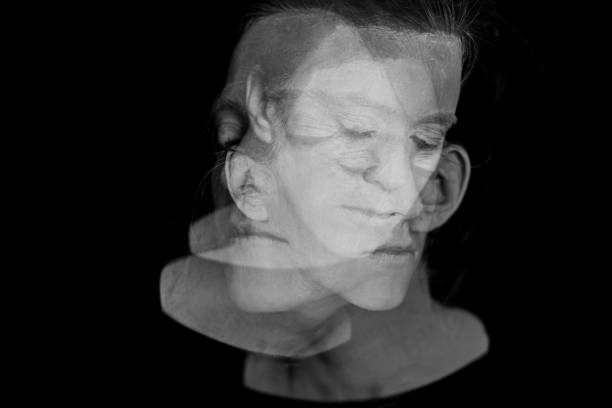Dissociative Identity Disorder (DID), previously known as Multiple Personality Disorder, Dissociative Identity Disorder (DID) is a mental health condition in which an individual has two or more distinct and separate identities or personalities, often referred to as alters. These identities may have their own unique names, memories, characteristics, and behaviors.
The person with DID may experience gaps in memory or consciousness when one identity takes control, and may feel a sense of detachment from their surroundings or themselves. DID is often associated with a history of trauma or abuse, and can cause significant distress and impairment in daily functioning.

Symptoms of Dissociative Identity Disorder
The most prominent symptom of DID is the presence of two or more distinct personality states, each with their own way of thinking, feeling, and behaving. These identities may have their own names, ages, genders, and personal histories. The person with DID may experience blackouts, amnesia, or gaps in memory, which can be associated with switching between identities. Other symptoms of DID may include:
* Depersonalization: Feeling detached from oneself or one's surroundings.* Derealization: Feeling like the world is unreal or dreamlike.
* Intrusive thoughts or flashbacks: Experiencing unwanted memories or flashbacks of traumatic events.
* Anxiety or depression: Feeling anxious or depressed, often as a result of the trauma that led to the development of DID.
Causes of Dissociative Identity Disorder
The exact cause of DID is not yet fully understood, but it is believed to be related to severe or chronic trauma during childhood. Children who experience physical, sexual, or emotional abuse, neglect, or other forms of trauma may develop DID as a coping mechanism to deal with the overwhelming stress and pain. The development of DID may also be related to other factors, such as a lack of supportive relationships or a family history of dissociative disorders.
How is DID diagnosed?
Why do more women suffer from Dissociative Identity Disorder than men?

There is some evidence to suggest that more women than men are diagnosed with Dissociative Identity Disorder (DID), but the reasons for this are not yet fully understood. Some researchers have suggested that this gender difference may be related to the higher rates of childhood trauma, particularly sexual abuse, experienced by women. Studies have shown that women are more likely than men to experience sexual abuse during childhood, which is a known risk factor for the development of DID.
Other factors that may contribute to the higher rates of DID in women include differences in coping mechanisms and social support systems. Women may be more likely to use dissociation as a coping mechanism in response to trauma, and they may also have less access to supportive relationships and resources to help them recover.
It is important to note, however, that while more women may be diagnosed with DID, men can and do experience the disorder as well. Further research is needed to better understand the gender differences in the prevalence and presentation of DID.
How is DID treated?
Dissociative Identity Disorder (DID) is typically treated with a combination of therapy and medication. The primary goal of treatment is to help individuals with DID manage their symptoms, reduce distress, and improve their overall quality of life. Here are some common treatment approaches for DID:
- Psychotherapy: Psychotherapy is the main form of treatment for DID. The most effective type of therapy for DID is generally considered to be specialized dissociative disorder therapy, which can include techniques such as:
-
Trauma-focused therapy: This type of therapy focuses on processing traumatic memories and helping individuals cope with the emotions and physical sensations associated with trauma.
-
Cognitive-behavioral therapy (CBT): CBT helps individuals identify and challenge negative thought patterns and behaviors that may be contributing to their symptoms.
-
Dialectical behavior therapy (DBT): DBT helps individuals regulate their emotions and improve their interpersonal skills.
- Eye Movement Desensitization and Reprocessing (EMDR): This type of therapy involves a combination of eye movements and cognitive processing techniques to help individuals process traumatic memories and reduce related symptoms.
-
Medication: Medication can be used to treat specific symptoms of DID, such as depression, anxiety, or sleep disturbances. Antidepressants, antipsychotics, and anti-anxiety medications are some of the medications that may be prescribed for individuals with DID.
-
Supportive therapies: Supportive therapies such as group therapy or family therapy can help individuals with DID develop social support networks and improve their relationships with loved ones.
-
Self-care: Individuals with DID may benefit from self-care practices such as exercise, meditation, or relaxation techniques to help reduce stress and promote overall wellness.
What are some myths and misconceptions about DID?
Reality: DID is recognized as a legitimate mental disorder by the American Psychiatric Association, and it is widely accepted by mental health professionals.
Myth: People with DID have multiple personalities that are completely different from one another.
Reality: The different identities or personalities in DID are not necessarily completely different from each other. They can share some similarities in behavior, beliefs, and preferences.
Myth: People with DID are violent or dangerous.
Reality: There is no evidence to suggest that people with DID are more likely to be violent or dangerous than people without the disorder.
Reality: While childhood trauma is a common factor in the development of DID, it is not caused by bad parenting. It is a coping mechanism that some people develop in response to severe and prolonged trauma.
Reality: Switching between personalities in DID is often involuntary and can be triggered by certain situations or emotions.
Reality: People with DID can usually remember what they did while in a different personality, although some may have partial or fragmented memories.
Reality: While the exact prevalence of DID is not known, it is estimated to affect around 1% of the general population.
Misdiagnosis of DID
Co-occurring conditions
Differential diagnosis
FAQS
What causes DID?
Can DID be cured?
What is switching in DID?
How common is DID?
How does trauma relate to DID?
Are movies and TV shows accurate portrayals of DID?












